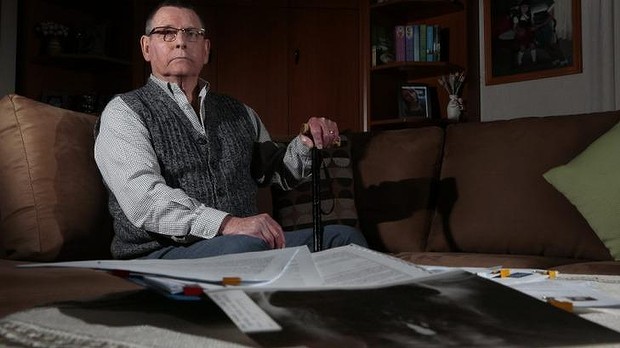EXCLUSIVE

Joern Hagemann who suffers from adhesive arachnoiditis a result of an injection of dye into his back in 1978 at the Canberra Hospital. Photo: Jeffrey Chan
A DRUG linked to the death of at least three people and that left thousands of other Australians with crippling injuries was illegally sent to hospitals around the country and used without appropriate approval, say newly revealed health documents.
Health Department records brought to light by a Freedom of Information request have shown the drug Pantopaque, produced by Lafayette Pharmacal, should never have been at dozens of hospitals during 1974-78.
It was considered an experimental drug and was not approved for general distribution when it was sent to more than 50 hospitals and medical clinics. It was bought into Australia on a restricted permit that allowed it to go to just four doctors practising at three Melbourne hospitals and one Perth hospital from 1974-1978.

Joern Hagemann who suffers from adhesive arachnoiditis a result of an injection of dye into his back in 1978 at the Canberra Hospital. Photo: Jeffrey Chan
However, in spite of restrictions on its import, Pantopaque was circulated in large quantities to hospitals and medical clinics in the ACT, NSW, Victoria, Queensland, Tasmania and Western Australia, earning the drug importer Cook Incorporated a rebuke from the Theraputic Goods Branch in June 1978. The TGB demanded an explanation, letters of correspondence between the two organisations show.
